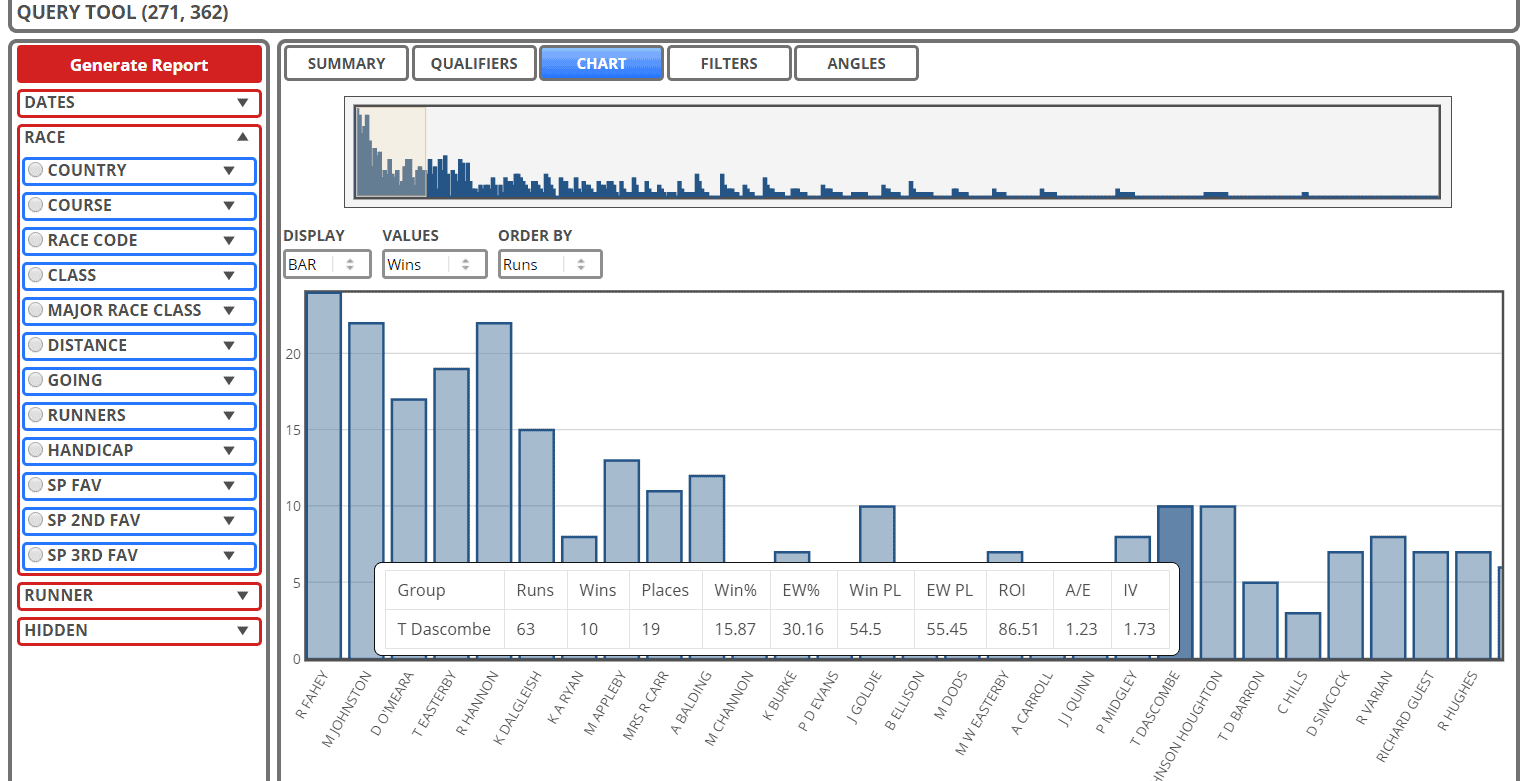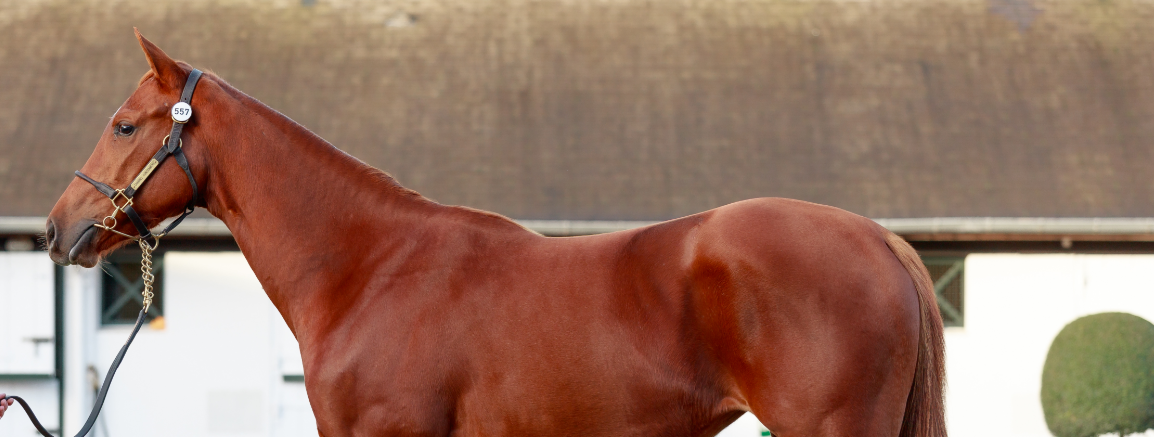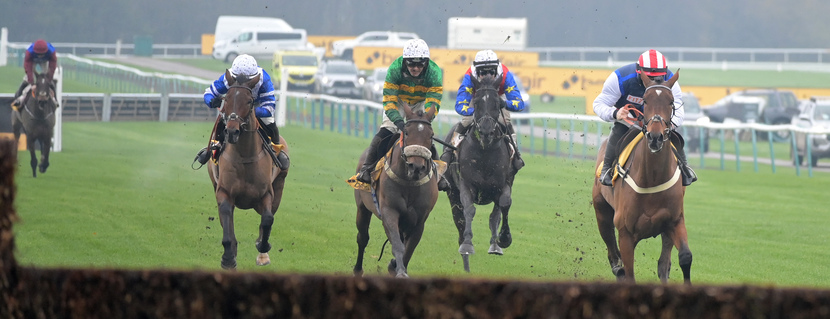Prepping for the Jumps - Part 4, Handicap Hurdles
This the fourth article in a series looking forward to the National Hunt season, writes Dave Renham. In the opening part, linked to below, I discussed novice hurdle races, and today I am going revisit the hurdle theme but this time we'll be looking at all other handicap hurdle races. Essentially this will include all handicap hurdle races without the term ‘novice’ in the title.
As throughout this series, data has been taken from 1st January 2018 to 31st August 2025 with profit and loss calculated to the Betfair Starting Price (BSP) with a 2% commission applied on any winning bets. Only UK NH races have been researched so this does not include Irish racing.
The previous articles are here:
Part 1: Novice Hurdles Part 2: Novice Chases Part 3: Handicap Chases
Contents
ToggleOn average there have been just over 1000 qualifying races per year, so we have a good sample size to review. I will start by examining the betting market.
Market factors
Betfair's market rank data shows the following:

Favourites made a small profit across the time frame, and it is interesting to see the A/E index broken down by time of year/months. Grouping months in pairs (e.g. January & February, March & April, etc) revealed this:
From September to April, the A/E indices were strong across the board. In the summer months, when there is less NH racing, the figures were low in comparison. [Readers may note that Peter May's SR figures are not produced on site between June and August because the data is considered less reliable at this time]
The betting returns (ROI%) correlate with the A/E indices as the following graph shows:
Anyone backing favourites from September to April over the period of study would have ended up doing quite well. If we had backed handicap hurdle favourites blind in the eight months 'non-summer months' from 2018 onwards profits accrued to £286.92 from £1 level stakes.
Having looked at the market, it is time to move on to other areas. As with the first three articles, I am going to impose a BSP price limit of 20.0 or lower from now on, to avoid any winners at excessively big odds potentially skewing the bottom line.
Sex of horse
There will always be more male runners than females and the ratio in handicap hurdle races was around 3:1 over the period of study. The findings are shown in the table:
Both sexes achieved similar win rates but, overall, female runners offered better value. However, fillies - female runners aged three or four - struggled, albeit from a modest sample. 597 fillies raced in these contests with 58 winning (SR 9.7%) for hefty losses of £202.20 (ROI -33.9%); A/E 0.68.
Age of horse
Let me move onto the age stats now. We saw that younger female runners struggled and, overall, that has been the case for both sexes as the table below shows:
Male runners aged three or four lost over 16p in the £, not as much as the fillies but still a steep loss. Horses aged five made a small blind profit and, looking across all metrics, five and six-year-olds showed a solid record.
The older brigade, those aged ten and up, made a fair profit with a decent A/E index of 1.09. Backing all these older runners to place on Befair was profitable also. Perhaps some punters ignored their chances based on age and hence they started slightly higher prices than their true price point. Sticking with the 10-year-olds, they performed even better over shorter distances of 2m4f or less. Their record with this distance requirement was 176 wins from 1328 runners (SR 13.3%) for a healthy profit of £204.62 (ROI +15.4%); A/E 1.13. On the place market the profit was also solid at £85.07. Based on this recent evidence, 10-year-olds may offer some value in the months to come.
Country of Breeding
I want to look now at some breeding data next with focus on the country of breeding. The splits were as follows:
American bred runners were rare and their record was poor. There was not too much in it in terms of the three main countries of Britain, Ireland and France, although the Irish figures read slightly better. German breds made a very small blind profit, as they did on the Betfair Place market, too (£18.78).
Position Last Time Out (LTO)
A look next at some LTO data focusing on the position a horse finished last time out. Here is the breakdown:
I feel Position LTO is a factor that I should always share but, on many occasions, there has been limited value to be found. Based on these stats horses running third LTO offered punters a minute profit but, in my view, this was likely coincidence and ultimately the finishing position last time offers no real clues to handicap hurdle races during the timeframe.
Days since last run (DSLR)
A look next at how long handicap hurdlers have been away from the track between runs. The ranges are necessarily a little arbitrary, and below is how I've broken them down:
It is rare for me to share these DSLR stats because usually there is nothing clear-cut to note. However, on this occasion there were some strong pointers which the table above shows clearly. Horses returning to the track within three days did really well, albeit from a smallish sample; and those who returned within four to seven days essentially broke even, so quick returners could be an area to keep a close eye on this season.
At the other end of the 'time off' spectrum, horses that were absent from the track for four months or more also turned a fair profit, so I am assuming a similar thing happened here as it did with the 10-year-old and older stats we saw earlier. My guess is that these runners started at prices that were marginally higher than their true price due to a possible ‘fitness bias’.
Trainers
Trainer data is always a favourite of racing fans so let’s see what we can find. In the table below I've listed all trainers who saddled at least 250 handicap hurdle runners during the study period. The trainers are ordered alphabetically:
23 of the 55 trainers made a blind profit during the timeframe, while 12 managed A/E indices of 1.10 or higher. Any of these 12 can be deemed to be trainers that performed well above the average.
On the flip side, a handful of trainers struggled, including Alan King, Martin Keighley, Seamus Mullins and Ian Williams. These handlers look over-bet in such races as a general rule.
From this initial starting point, I wanted to examine trainer performance across different BSPs. To do this I split their results into six price bands:
I wanted to compare A/E indices across said price brackets over the review period. Each trainer needed to have at least 60 runners within each individual price band to qualify and, to appear in the table, the trainer must have achieved that in four or more of the six price bands. Any price band where they sent out fewer than 60 runners was left blank.
Any entry highlighted in ‘blue’ was a positive, anything in ‘red’ a negative. My criteria for this was:
By colour coding it helps us to compare the data sets more easily. Here were the splits:
If we look back at Chris Gordon’s overall record, we can see that it was extremely positive with an overall A/E index of 1.08 and returns equating to just over 20 pence in the £. Hence, it is no surprise perhaps to see him with three ‘blues’ out of five, and indices of 1.00 and 0.93 in the other price segments. Likewise, Tom Lacey, whose overall strike rate was above 23% with returns of 28.9% and a 1.26 A/E index, had four ‘blues’ out of five with the other A/E index above 1.00 at 1.03.
Seeing that type of positive consistency across different price bands makes Lacey’s overall stats even more impressive. Rebecca Menzies, another trainer who had excellent overall stats, achieved four ‘blues’ out of five. She, along with Gordon and Lacey were trainers to excel during this timeframe and it will be interesting to see if they can replicate this over the coming months. If we combine the results of these three trainers and look at the yearly ROI% returns we see the following:
Seven winning years out of eight – I wonder if system punters might consider combining the three this year and backing all such runners?
Neil Mulholland attacks handicap hurdles on a regular basis so his overall figures are impressive. In terms of the price bands, he had three ‘blues’ out of six, with the other three indices being 1.00, 1.09 and 0.94. Again, over the past few years he has been a trainer to keep on the right side of, so I am expecting his runners to go well once more this year.
Other positives worth noting are that both the O’Neill stable and the Hobbs/White yard did exceptionally well with shorter prices runners (BSP 3.5 or less). The O’Neill stable had 49 winners from 109 (SR 45%) for a profit of £19.11 (ROI +17.5%); the Hobbs/White had a 50% strike rate thanks to 43 winners from 86 for a BSP profit of £24.86 (ROI +28.9%).
In terms of negatives, Alan King’s overall figures were quite poor, showing losses of over 27p in the £. That manifested as four ‘reds’ out of five. He is not typically a trainer to offer value in handicap hurdles based on these findings.
Summary
Let me finish by placing my interpretation of the main positives and negatives highlighed above in a table, as a sort of handicap hurdle ‘ready reckoner’:
That’s it for this 'NH Prep' deep dive. Next week I'll be taking a look at bumpers, or National Hunt Flat races to give them their full title. Until then...
- DR



























I often wonder if career runs (in all types of race) has any effect on performance.
Number of times they run before they go off the boil through boredom , physical fitness or other factors.
Could you supplement this data with the average number of bets seasonally for the following:
1. For favourites from Sept. to April
2. The three individuals named for 2018-2025
Also, I do think that those returning to the track within 7 days (achieving a 28% win rate) bear some scope for a systematic use of a staking plan to turn a profit across the winter months, if the longest losing run is bearable?
Thanks again Dave, very interesting angles. I have never enjoyed betting in Chases and leave them alone in the main. I much prefer studying Hurdle races, and this gives me an additional insight I didn’t have before.
Best wishes,
Richard.
Great piece as always Dave
Nice winner at Kelso yesterday for Tom Lacey. I put through HRB, Lacey, Menzies, and Gordon, asking where in the market is best to play their handicap hurdlers which as one would probably expect, the top three in the betting. The jockey that won on Lucky Manifest for Lacey yesterday, was Toby McCain-Mitchell who since 2023 has had 23 wins from 110 rides and is in profit over fences, hurdles, and NHF races. Well worth putting in your tracker.
Leave a Reply
Want to join the discussion?Feel free to contribute!